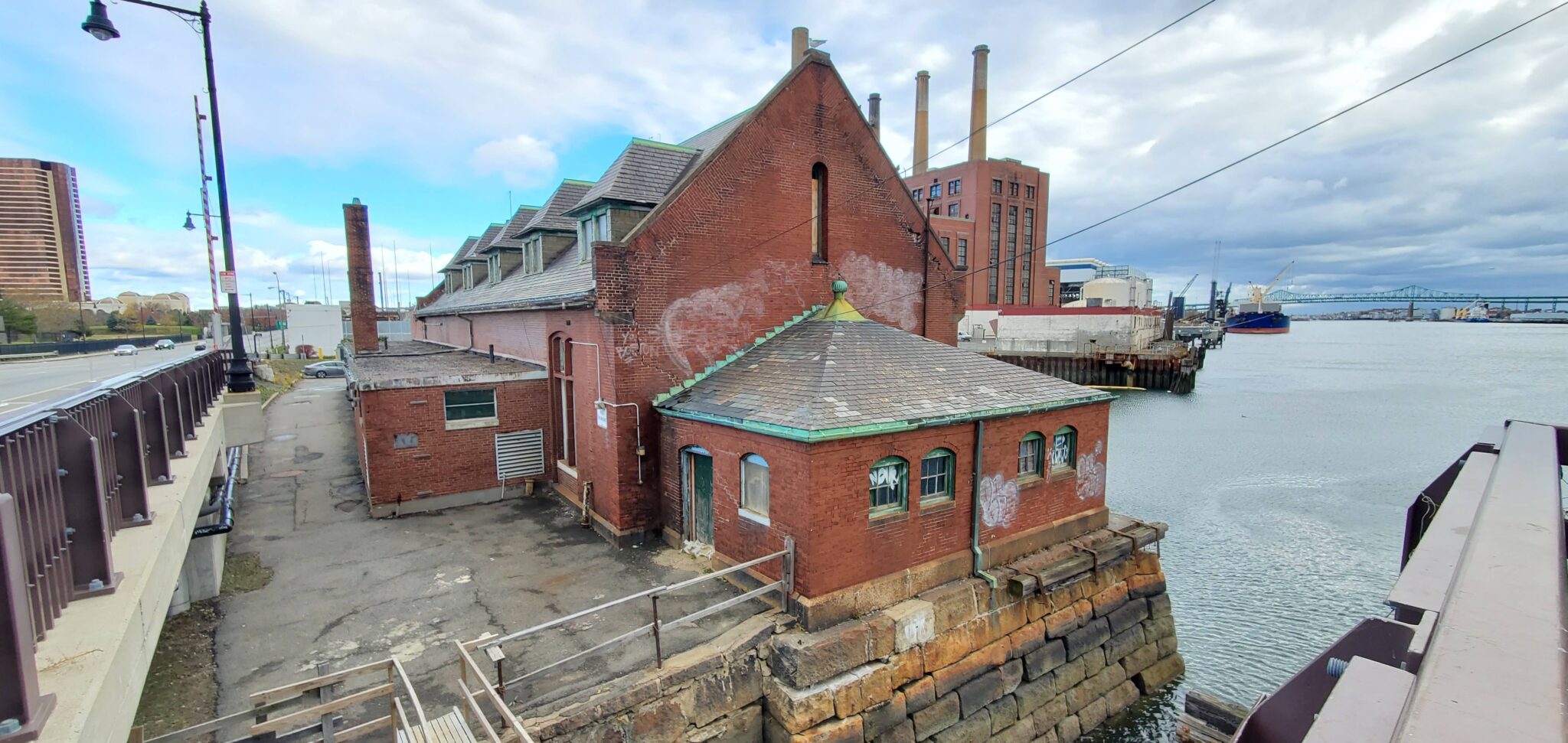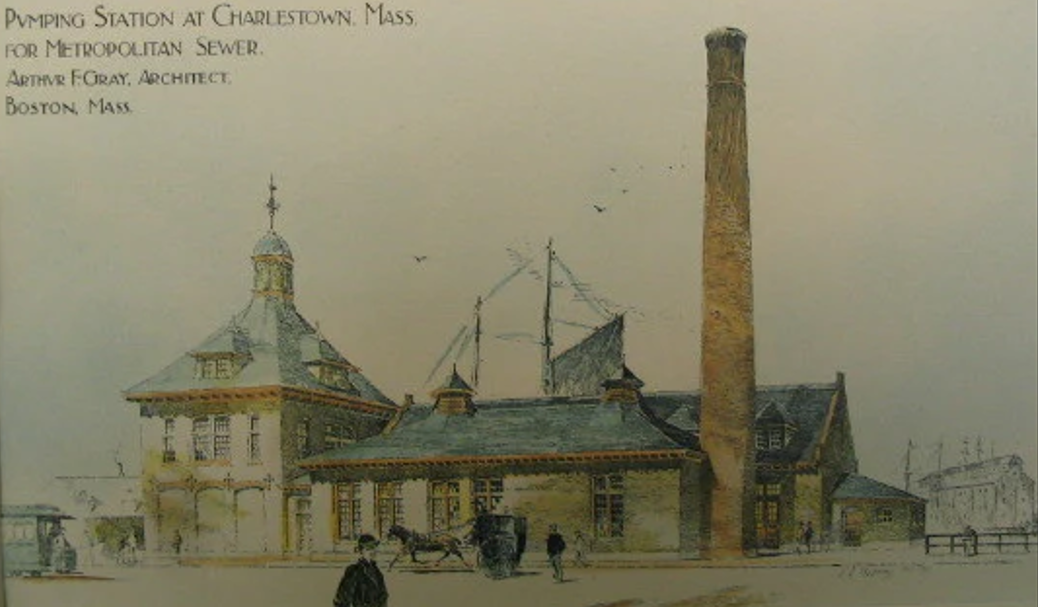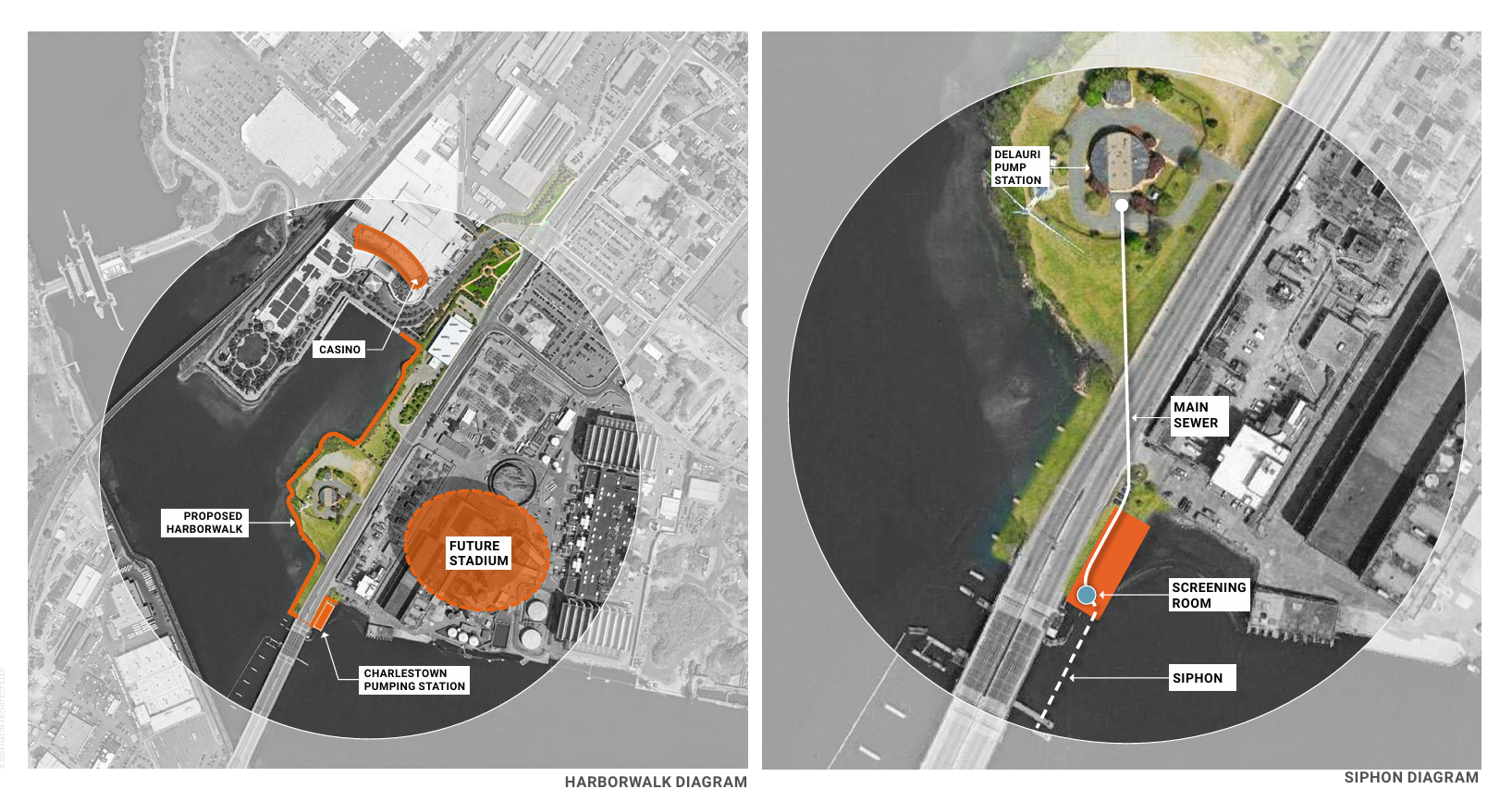
22 Apr Feasibility study nearly complete on the Charlestown Pumping Station
In 2024, Historic Boston Inc (HBI) announced that we would be working in collaboration with Fort Point Associates on a feasibility study to rehabilitate the Charlestown Pumping Station on Alford Street, which is located on the Everett/Boston line. Much progress has been made on the study, which we anticipate will be completed within the next few months.
Charlestown Pumping Station History
Research conducted by preservation consultants Public Archaeology Lab outlined the building’s history. Constructed in 1896 as part of the expanding Metropolitan Sewer System, the brick and slate pumping station was initially equipped with two 7.5 foot submerged centrifugal pumps that could each process 22 million gallons of effluent per day. As the population grew, so did the need to process more sewage, and another pump with a 60 million gallon capacity was added in 1935.
Modifications to the structure were made over the years, including demolition of some additions and replacement with another in the 1960s, likely to accommodate reconstruction of the Alford Street Bridge. In 1993, the new DeLauri Pumping Station came on line across the street, and the Charlestown Pumping Station, which is still owned by the Massachusetts Water Resources Authority (MWRA), has been vacant ever since. While no longer used for its original purpose, the sewer line still runs under part of the building, and the MWRA requires access to part of the building from time to time for clearing out empty bottles and other debris that accumulate in part of the sewer line.
Exploring What’s Possible
HBI began the feasibility study with help from Feldman Geospatial, who scanned the structure inside and out to provide an existing conditions model that could be used by our design team. John Wathne of Structures North Consulting Engineers was engaged to thoroughly inspect the building and report on deficiencies and areas of concern, which included the stone sea wall on which the building sits. It was also noted that the basement floods with tidal water, which has contributed to damaging the structure. Childs Engineering was hired to conduct a sub-surface investigation of the sea wall’s condition, and the two structural consultants have planned scopes of work to repair the building and sea wall and to address the flooding basement.
Because the building sits in a Designated Port Area (DPA) on the Mystic River, a new use for the Pumping Station would need to be one that is water-dependent, as defined by state regulations, unless the building is taken out of the DPA by the state legislature. While identifying a new use for the Pumping Station was not part of the scope of the feasibility study, we are considering the possibility of its reuse as a ferry station. Future plans for the adjacent neighborhood anticipate transformation from an industrial area to more commercial uses, including a new soccer stadium now being planned by the Kraft Group. Plans are also in development to extend an existing harbor walk to run from the nearby Encore Casino under the Alford Street Bridge, terminating at the Pumping Station. The Charlestown Pumping Station could help revitalize this neighborhood as it evolves.
Hacin Architects is now working on some conceptual designs for the rehabilitation of the historic pumping station. We look forward to sharing their vision as it evolves over the next few months.






